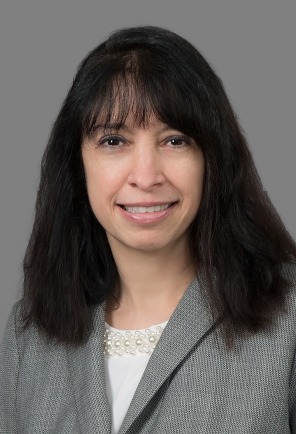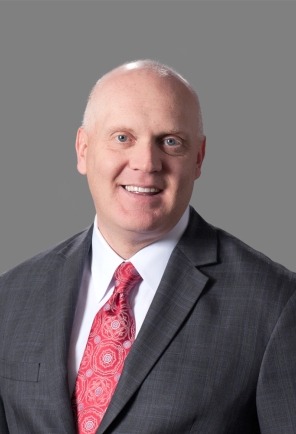Internal-Use Software Finally Gets Some Love
2014-Issue 30—It has been 17 years since the United Stationers’ case fundamentally changed the government’s view on the research tax credit and created a new standard known as the “discovery test” (United Stationers, Inc. v. U.S., 163 F3d 440 (1998)). The discovery test provided that an activity must intend to exceed, expand, or refine the common knowledge of skilled professionals in the particular field of science or engineering in order to qualify for the research credit. Although the discovery test has now primarily been rejected under the urging of taxpayers and Congress, it continues to be a thorn in the side of taxpayers claiming research credits for internal-use software (IUS) development. A recently released Chief Counsel Advice (CCA) may have opened the door a little wider for taxpayers wishing to claim IUS, so taxpayers should carefully review how this unsettled area of law has evolved. This article focuses on the key points to consider when claiming the research credit for software development activities.
Background
The Section 41 research credit was originally enacted in 1981 to stimulate research and development in the United States. It is generally available to trades or businesses that increase their spending on qualified research activities. In practice, the term “qualified research” is often reduced to a four-part test to provide a frame of reference. Qualified research must satisfy the following four criteria:
- Involve an activity that is technological in nature (i.e., involves a physical, biological, chemical, computer or engineering science);
- Involve an activity that is intended to result in the development of a new or improved product, process or other business component;
- Contain an element of uncertainty with regard to capability, method or design; and
- Require a process of experimentation that relates to the development of a new or improved function, performance, reliability or quality.
- The 2003 final regulations (T.D. 9104) contain the most recent IRS guidance regarding the definition of qualified research. While these regulations effectively eliminate the discovery test for most development efforts, they do not include guidance related to internal-use software (that paragraph is “reserved”).
Issues have surrounded IUS since the research credit was first enacted in 1981. In debating the original legislation for the research credit, the House questioned whether the credit should be available for the development of internally used software. Even though there was no specific exclusion adopted in the 1981 Act, questions remained as to whether it should qualify. Congress attempted to clarify that internal-use software can qualify with changes it made in the Tax Reform Act of 1986, but even with that clarification, it is still a gray area.
The 1986 Act expressly excludes internal-use software from the general definition of qualified research, but provides that it will qualify if either (1) one of two statutory exceptions is met or (2) if exceptions provided in regulations are satisfied. Although it is clear that Congress intends for internal-use software to qualify, the legislative history implies that IUS should satisfy a higher standard than other types of research and development activities. So, the question remains as to what is IUS and what is the higher standard.
Understanding the Regulatory Differences for IUS
To qualify for the research credit, IUS must meet the general four-part test for qualified research discussed above, as well as three additional requirements that together are known as the “high threshold of innovation test.” Over the years, the Treasury Department and the IRS have tried to delineate the high threshold of innovation test, define what types of software are IUS, and provide exceptions to the IUS rules to allow certain software to be evaluated under the general definition of qualified research. This regulatory process has involved two sets of proposed regulations and one set of final regulations.
The first of these efforts is a set of proposed regulations issued in 1997. These regulations embrace many of the standards established inUnited Stationers, including the so-called “discovery test.” The 1997 proposed regulations were superseded by final regulations (T.D. 8930) issued in early 2001. T.D. 8930 adopted many provisions from the 1997 proposed regulations including the discovery test, but the issuance of these regulations was met with such a strong backlash that the Treasury Department decided to review T.D. 8930 soon after it was released. This led to the issuance of a second set of proposed regulations in 2001, which eliminate the discovery test and also contain changes to the IUS provisions. Although the IRS and Treasury received many comments through this regulatory process, no supplemental final regulations have been issued addressing IUS.
Under T.D. 8930, internal-use software qualifies for the credit in much the same way as it does under the 2001 proposed regulations. However, there are several important differences. Most notably, the first prong of the high threshold of innovation test in T.D. 8930 was modified. T.D. 8930 defines the high threshold of innovation test as follows:
- Innovation test: The software is innovative in that the software is intended to result in a reduction in cost, improvement in speed or other improvement that is substantial and economically significant;
- Economic risk test: The software development involves significant economic risk in that the taxpayer commits substantial resources to the development and there is a substantial uncertainty, because of technical risk, that such resources would be recovered within a reasonable period; and
- Commercial availability test: The software is not commercially available for use by the taxpayer in that the software cannot be purchased, leased or licensed and used for the intended purpose without modifications that would satisfy the requirements of paragraphs (c)(6)(vi)(A) and (B) of this section.
- The 2001 proposed regulations closely follow the economic risk and commercial availability tests in T.D. 8930, but the first prong of the high threshold of innovation test differs greatly in that IUS under the 2001 proposed regulations must be innovative in that it is “intended to be unique or novel and to differ in a significant and inventive way from prior software.”
Other differences between the 2001 proposed regulations and T.D. 8930 include the definition of IUS and the regulatory exclusions from the additional IUS requirements. Under the 2001 proposed regulations, computer software developed by or for a taxpayer is deemed to be primarily for internal use unless the software is to be commercially sold, leased, licensed or otherwise marketed. The 2001 proposed regulations also provide that internal-use software may qualify for the research credit provided it meets the general requirements for qualified research and one of the following exceptions is met:
- The taxpayer develops software for use in an activity that constitutes qualified research (other than the development of the internal-use software itself);
- The taxpayer develops software for use in a production process that meets the general requirements for the Section 41 credit;
- The taxpayer develops hardware and software together as a single product that is used directly by the taxpayer in providing services to customers;
- The taxpayer develops software for use in providing computer services to customers; or;
- The software satisfies the “high threshold of innovation test.”
T.D. 8930 includes the above exclusions, but also has an exception for taxpayers that develop software for use in providing non-computer services to customers—that is, the software is used in providing non-computer services in order to provide customers a new feature with respect to a non-computer service and the taxpayer reasonably anticipated that customers would choose to obtain the non-computer service from the taxpayer (rather than from the taxpayer’s competitors) because of those new features provided by the software.
Taxpayers that provide a non-computer service may benefit from the ability to apply this additional exclusion. Although both regulations contain the combined hardware-software exception, T.D. 8930 includes a narrower definition because it requires that the taxpayer use the combined product to provide technological services. Other subtle regulatory differences exist in the general definition of qualified research as well.
The IRS issued a notice of proposed rulemaking in early 2004 (Internal Revenue Bulletin 2004-6, Announcement 2004-9, Feb. 9, 2004) that requested comments on rules for internal-use software under Section 41(d)(4)(E) and on the definition of internal-use software. Announcement 2004-9 also states that taxpayers can choose to rely on the IUS rules contained in T.D. 8930 or contained in the 2001 proposed regulations. However, taxpayers who choose to rely on the IUS provisions in T.D. 8930 also must satisfy the general definition of qualified research contained in T.D. 8930. This means that taxpayers must satisfy the “discovery test” standard even though it has been revoked by T.D. 9104, addressing the general definition of qualified research.
Arguably, the 2001 proposed regulations establish a higher standard with respect to the first prong of the high threshold of innovation test, requiring that the software be “unique or novel” and “differ in a significant and inventive way” from prior software implementations or methods. However, the 2001 proposed regulations do not include the discovery test as set forth in T.D. 8930, thus making a choice between the two sets of regulations a difficult decision.
In 2009, FedEx Corporation successfully challenged the legal standards required in Announcement 2004-9 in a U.S. District Court case (Fed Ex Corporation v. U.S., 103 AFTR 2d 2009-2722, 2009-1 USTC 50,435 (W.D. Tenn. 2009)). The court held that FedEx could rely on the general definition of qualified research contained in the 2003 final regulations (T.D. 9104) and also apply the IUS tests set forth in T.D. 8930 — a win-win for taxpayers. The court specifically noted that the 2003 final regulations removed the IUS provisions that had been in the 2001 proposed regulations and marked Reg. Sec. 1.41-4(c)(6) as “reserved.” The government appealed the district court’s decision in 2013, but the Justice Department decided to abandon its appeal shortly thereafter.
Until recently, the IRS has declined to follow the court’s decision in FedEx. Taxpayers following the FedEx approach of applying both sets of regulations generally have been required to go to Appeals to reach an agreement on their research credit claims with respect to IUS activities.
Recently issued CCA 201423023 (dated May 29, 2014 and released in June) addresses the eligibility of internal-use software costs. The CCA concludes that the IRS should not challenge taxpayers that choose to follow the IUS provisions in either T.D. 8930 or the 2001 proposed regulations while also following the general eligibility rules for qualified research in T.D. 9104. This internal guidance basically adopts the findings of FedEx. While the CCA cannot be relied on as precedent by taxpayers, it is a favorable development that may reduce many IUS-related disputes between taxpayers and IRS examiners.
Alvarez & Marsal Taxand Says:
The recent CCA is a taxpayer-favorable development. The CCA essentially follows the FedEx decision and allows taxpayers to use the favorable IUS provisions in T.D. 8930 along with the favorable definition of qualified research in T.D. 9104. The recent guidance will not resolve all disputes because it does not address the definition of IUS or the exceptions. Taxpayers should evaluate whether the use of the words “primarily for” and “intended to” may broaden the types of software that meet the commercially sold requirement. Also, taxpayers should consider whether the additional exception for non-computer services in T.D. 8930 could be of value.
The ultimate determination of whether an activity satisfies the requirements of the four-part test or the high threshold of innovation standard is highly factual and beyond the scope of this issue of Tax Advisor Weekly. This evaluation is also complicated by a large body of case law and the need to reconcile research activities with allowable expenditures. (See, for example, Tax Advisor Weekly 2013-23 “Maximize Your Research Credit With Non-Traditional R&D Groups,” June 04, 2013.)
You should keep in mind that CCA 201423023 does not negate the requirement to document qualification of your research activities, which is often more challenging in the software arena. As we have discussed before, all qualified research must be properly documented in order to satisfy regulatory requirements. (See Tax Advisor Weekly 2011-16, “Unforgiven: Lack of Proper Documentation Can Jeopardize Your Research Credit,” April 21, 2011.) However, the CCA does provide a reasonable approach by the IRS that should help taxpayers dealing with many IUS issues.
Disclaimer
The information contained herein is of a general nature and based on authorities that are subject to change. Readers are reminded that they should not consider this publication to be a recommendation to undertake any tax position, nor consider the information contained herein to be complete. Before any item or treatment is reported or excluded from reporting on tax returns, financial statements or any other document, for any reason, readers should thoroughly evaluate their specific facts and circumstances, and obtain the advice and assistance of qualified tax advisors. The information reported in this publication may not continue to apply to a reader's situation as a result of changing laws and associated authoritative literature, and readers are reminded to consult with their tax or other professional advisors before determining if any information contained herein remains applicable to their facts and circumstances.
About Alvarez & Marsal Taxand
Alvarez & Marsal Taxand, an affiliate of Alvarez & Marsal (A&M), a leading global professional services firm, is an independent tax group made up of experienced tax professionals dedicated to providing customized tax advice to clients and investors across a broad range of industries. Its professionals extend A&M's commitment to offering clients a choice in advisors who are free from audit-based conflicts of interest, and bring an unyielding commitment to delivering responsive client service. A&M Taxand has offices in major metropolitan markets throughout the U.S., and serves the U.K. from its base in London.
Alvarez & Marsal Taxand is a founder of Taxand, the world's largest independent tax organization, which provides high quality, integrated tax advice worldwide. Taxand professionals, including almost 400 partners and more than 2,000 advisors in 50 countries, grasp both the fine points of tax and the broader strategic implications, helping you mitigate risk, manage your tax burden and drive the performance of your business.
To learn more, visit www.alvarezandmarsal.com or www.taxand.com





